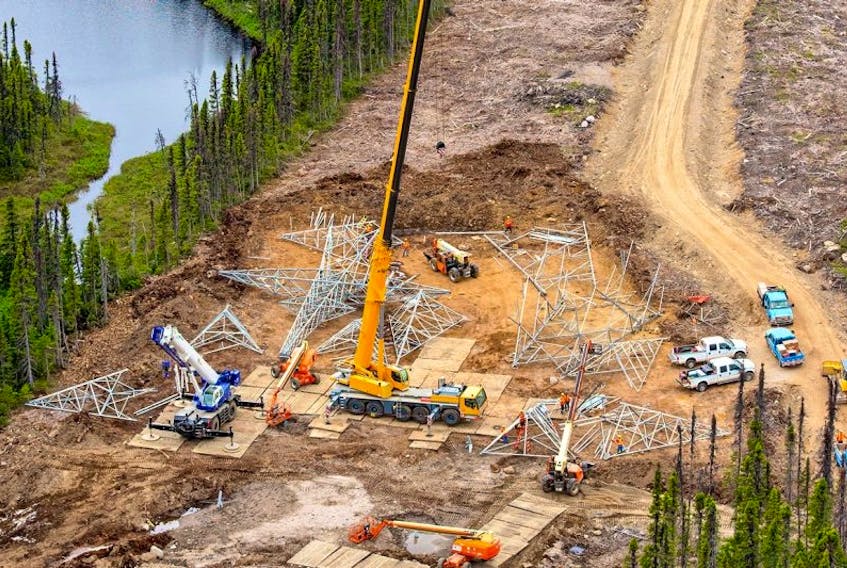It kind of makes you grit your teeth.
The last few days of hearings at the Muskrat Falls inquiry were, in places, more than a little hard to take.

The commissioner heard the final submissions from all the parties with standing at the inquiry. Often, it was lawyers trying to justify their client’s actions, or their lack of action.
But there were a few pearls — like Newfoundland Power, clearly laying out its concerns about the reliability of the island’s power grid once Holyrood closes.
Remember, Newfoundland Power has plenty of experience with delivering electricity in this province. Their submission highlighted reliability issues with the Labrador-Island Link (LIL), the line bringing power from Muskrat Falls.
The problems aren’t all what you think they might be, and Newfoundland Power lays them out with delightful clarity. Here are a few.
Newfoundland Power says the LIL meets base CSA standards, but not necessarily the standards for the known weather in the 11 climatic regions it crosses.
“By way of example, historical data shows that the Avalon Peninsula, including the isthmus, has had icing events of up to 75 mms (3 inches) of ice and winds of up to 130 km/h. On the Avalon, the LIL is designed to sustain either 75 mms of ice or 130 km/h of wind. However, in combination, the LIL is only designed to sustain 45 mms of ice (60 per cent of possible loading) in winds of 60 km/h. (approximately 45 per cent of maximum winds). The problem is that icing and wind events can and do occur simultaneously, or sequentially (ice formation followed by extreme winds while the ice remains on the lines). The LIL is not designed to sustain combined maximum ice and maximum wind events.”
The problems aren’t all what you think they might be — and Newfoundland Power lays them out with delightful clarity.
Another thing? Newfoundland Power points out that there’s a big problem not with the LIL, but with other power lines dating back to the 1960s, and with the number of eggs we have in one particular basket.
“After the decommissioning of Holyrood, the Avalon Peninsula will be heavily dependent upon the transmission lines crossing the isthmus of Avalon. Four lines (3 AC lines and the LIL) all must pass through a very narrow corridor. That corridor has historically been subject to extreme wind and icing events. Currently, the Avalon Peninsula has two basic sources of supply; (i) Holyrood and other Avalon Peninsula generation and (ii) transmission lines crossing the isthmus. After the decommissioning of Holyrood, the Avalon Peninsula will be much more dependent upon the transmission lines across the isthmus. The issue is not the design or operation of the LIL itself; rather it is the increased dependence on the transmission lines crossing the isthmus. There is currently in excess of 700 MW of capacity on the Avalon Peninsula. After the decommissioning of Holyrood, there will only be somewhat in excess of 200 MW of capacity on the Avalon. That amount of power would be seriously deficient in the event of an extreme event which impacted the transmission lines across the isthmus. The three AC lines are built to a lower standard than the LIL and are therefore most vulnerable. The converter station at Soldiers Pond and the operation of the LIL are dependent upon the availability of AC power. The loss of the transmission capacity across the isthmus would result in a power shortage on the Avalon which could potentially be more serious than the widespread power outages that occurred in 2013 and 2014.”
So, without power from the other, less robust lines, the DC power on the LIL couldn’t be converted to the AC power we use in our homes. That’s a big problem.
Newfoundland Power says Nalcor and Newfoundland and Labrador Hydro know full well about the issue, but haven’t even started to find a solution.
The choices? Both come with new costs: either replacement line work or new backup generation.
Or maybe blankets.
Russell Wangersky’s column appears in 36 SaltWire newspapers and websites in Atlantic Canada. He can be reached at [email protected] — Twitter: @wangersky.
MORE FROM RUSSELL WANGERSKY
• Government, SNC-Lavalin make bad bedfellows
• I’ll be tracking the untruths









